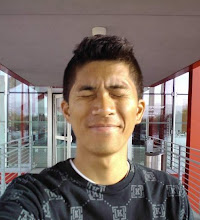You are driving, it doesn't matter if you are driving alone or with another, but you are driving at night. It doesn't exactly matter where you are driving, but you are on an empty road with no one in sight. You approach a red light and stop as you ought to. You can see out in every direction at least fifty feet, more than enough to know that no other cars are approaching and no pedestrians are out and about (maybe it's late in the night, or maybe you really are in the middle of nowhere). As it is a red light and you have come to a full stop, you realize you've been waiting patiently for a light change for about twenty seconds. Still, a red light. No one approaching, no one around. Do you continue to wait for a green light or do you drive on?
This dilemma is posed on the heels of a Los Angeles Times article exploring Governor Schwarzenegger's new budget that greenlights (no pun intended) the possibility of new types of cameras being erected at intersections that not only detect runners of red lights as we've become accustomed to, but those who speed to beat them during yellow lights. And to slap them with $200+ tickets for offenders going 15 mph above the limit ($300+ for those going faster than that). The plan would be to append existing camera sensors throughout the state that detect red light runners, adding up to about 500 in southern California, with these speedster sensors, which lawmakers estimate could bring in up to $340 million through June 2011 to help boost the ailing economy via these estimated 2.4 million unfortunate citizens. Safety is also being asserted as a direct product of the maneuvers.
It's like what Foucault said of architecture, what isn't important is how a thing becomes canonized or ordained in law, but how society reacts to them in praxis; speed limits and policies concerning conduct and behavior ought to be judged within their contexts. Otherwise, what has always been mere space is now becoming an atmosphere of surveillance and regulation. We're cutting up our domains into an endless array of adjacent behavioral assessments, via the cold gaze of a camera, and hoping we come away with a passing grade each time.
R.J.M.


No comments:
Post a Comment